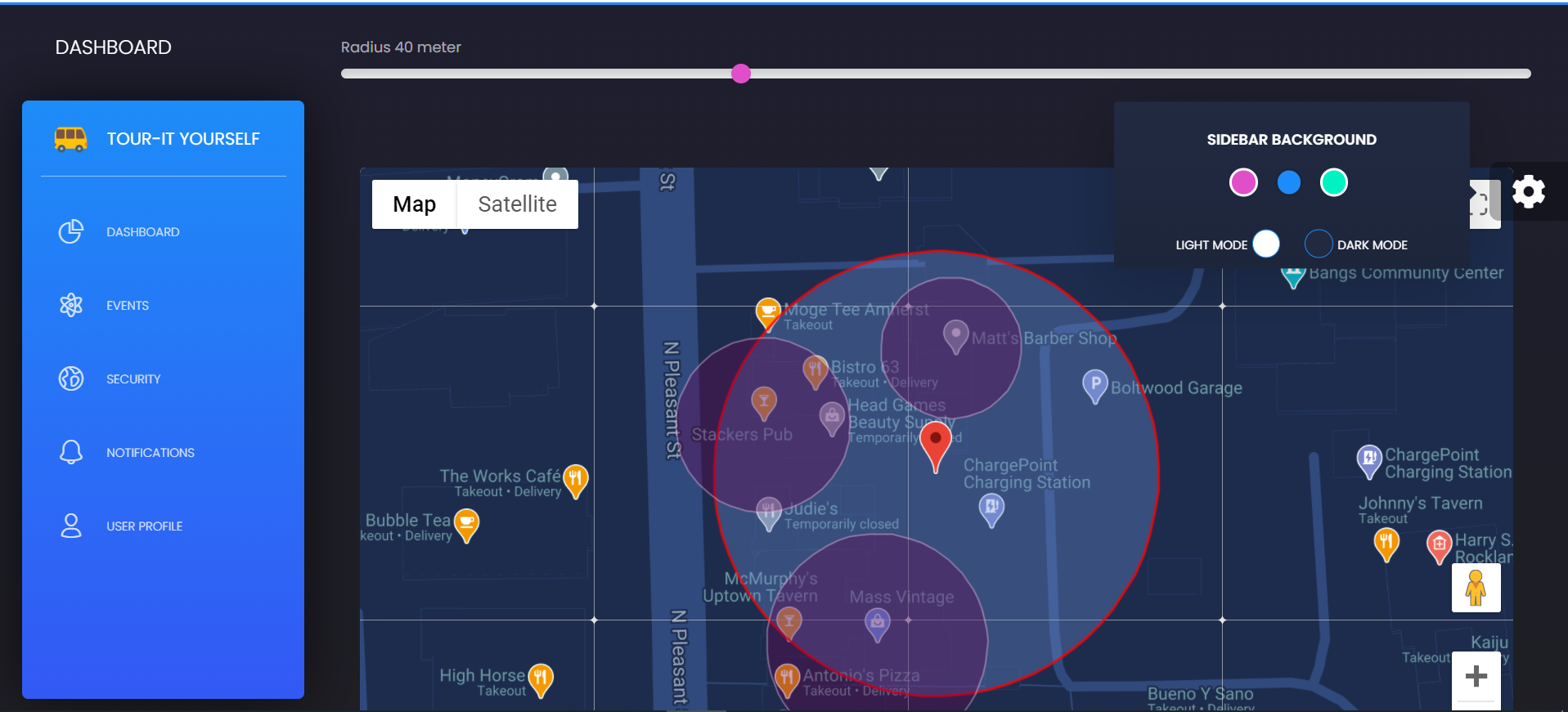Tour-it Yourself

Description as a Tweet:
"Tour-it Yourself" is a twist on "Treat Yourself", where Geofencing will track the tourist's movements, transactions, product preferences, & suggest new places. Businesses would benefit from the tailored suggestions, while tourists can enjoy their vacation without any worry.
Inspiration:
I wanted to build something financially secure, while still challenging the idea that GPS-tracking is not the evil of the present or the future. We can use the tracking and recognition system in the benefit of our society. That's why I came up with the hack idea where we can track the users for their credit card safety, and their own safety when they are in a totally new place, on a vacation.
What it does:
It tracks a user through the GPS, creating a geofence around them. The shops, food joints, services within that geofence would be able to send personalized product notifications. This would increase the business for store-owners, and also provides a smooth medium to search for something in a place you do not have much geological experience.
This also allowed us to add our credit card security idea where if the user is too far away from their GPS-tracked credit card; they would be notified upon any transaction, or even before that, through the tracker on the card.
How we built it:
Built a webapp in React, can be easily integrate on any mobile platform. Main components are Radar.io Geofencing API and Google Maps Javascript API. The former was used to actually get the location and track the user, latter was used for drawing out the paths and landmarks on a map.
We built two separate dashboards for product/service suggestions and credit card tracking. We also built a common event tracker, which would notify the user about all the social events happening round the place they currently are.
Technologies we used:
- HTML/CSS
- Javascript
- Node.js
- React
- Misc
Challenges we ran into:
I am more specialized in ML/AI than in web dev. So figuring out how to incorporate the React App with the Radar.io and Google APIs were the biggest challenges. I got ample time to learn and implement. In the end, the product/project turned out just the way I wanted it to.
Accomplishments we're proud of:
I love using APIs. And the way I aimed for Financial security and the geofencing idea was fun. I am proud of my creativity. I am always curious to push the API functionality even further. There's just so much potential with these kind of products. I like the fact that I don't prefer web dev but I still took the challenge, instead of opting for the easy way out.
What we've learned:
I learned to use Google Cloud Platform and how to authenticate the API endpoints. It's fun to plug in these components. So much potential there.
What's next:
I would definitely want to try the Regions or Places part of the API, which is not accessible to the public. I believe geofencing is the future and I can make my app more robust and real-life deployable by adding all the authentication mechanisms.
Built with:
Built a webapp in React, can be easily integrate on any mobile platform. Main components are Radar.io Geofencing API and Google Maps Javascript API. The former was used to actually get the location and track the user, latter was used for drawing out the paths and landmarks on a map.
We built two separate dashboards for product/service suggestions and credit card tracking. We also built a common event tracker, which would notify the user about all the social events happening round the place they currently are.
Prizes we're going for:
- Best Security Hack
- Best Finance Hack
- Best Documentation
- Best Venture Pitch
- Best Web Hack
- Best Domain Name
- Best Mobile Hack
- Most Creative Radar.io Hack
- Best Use of Google Cloud
